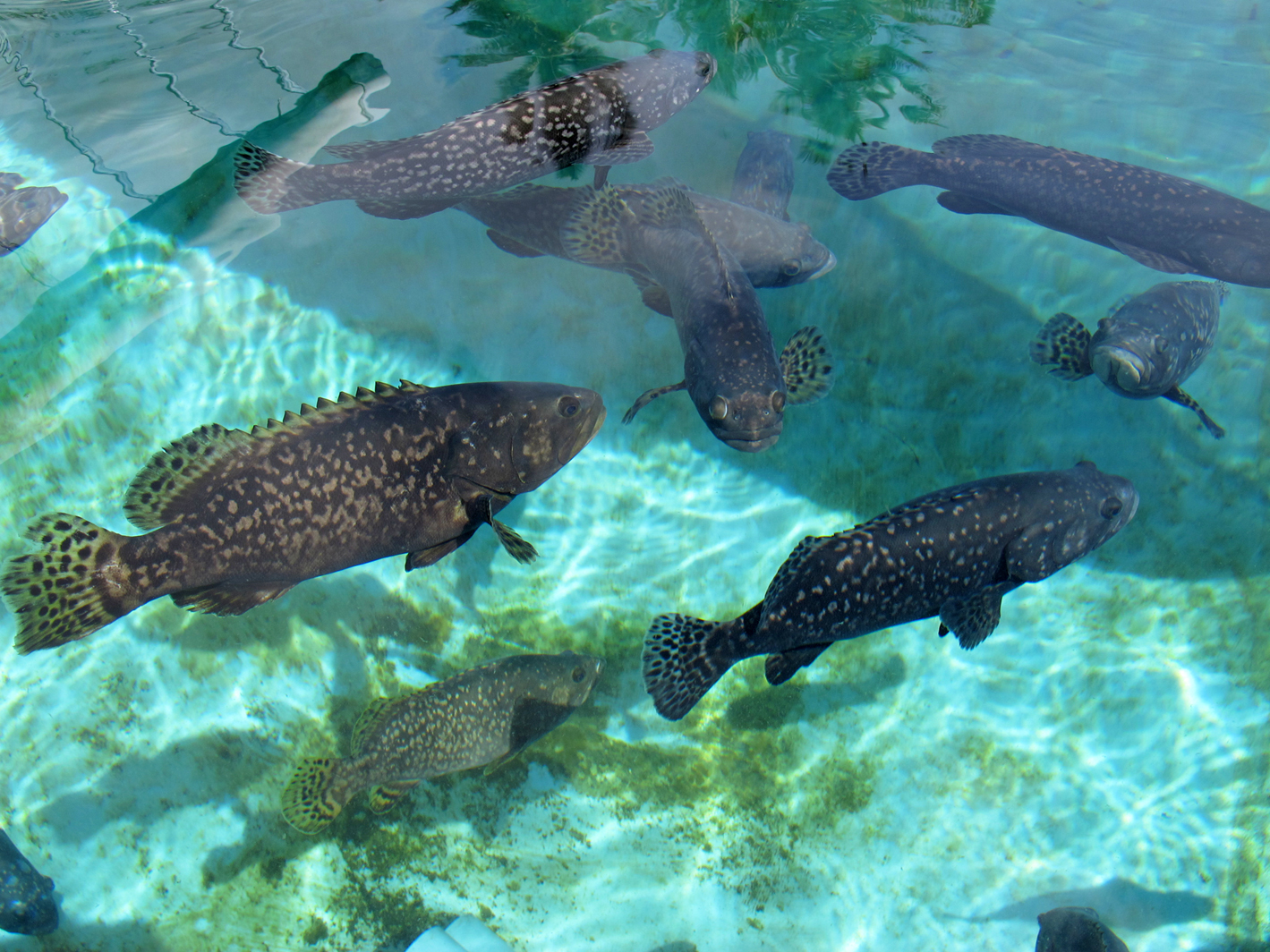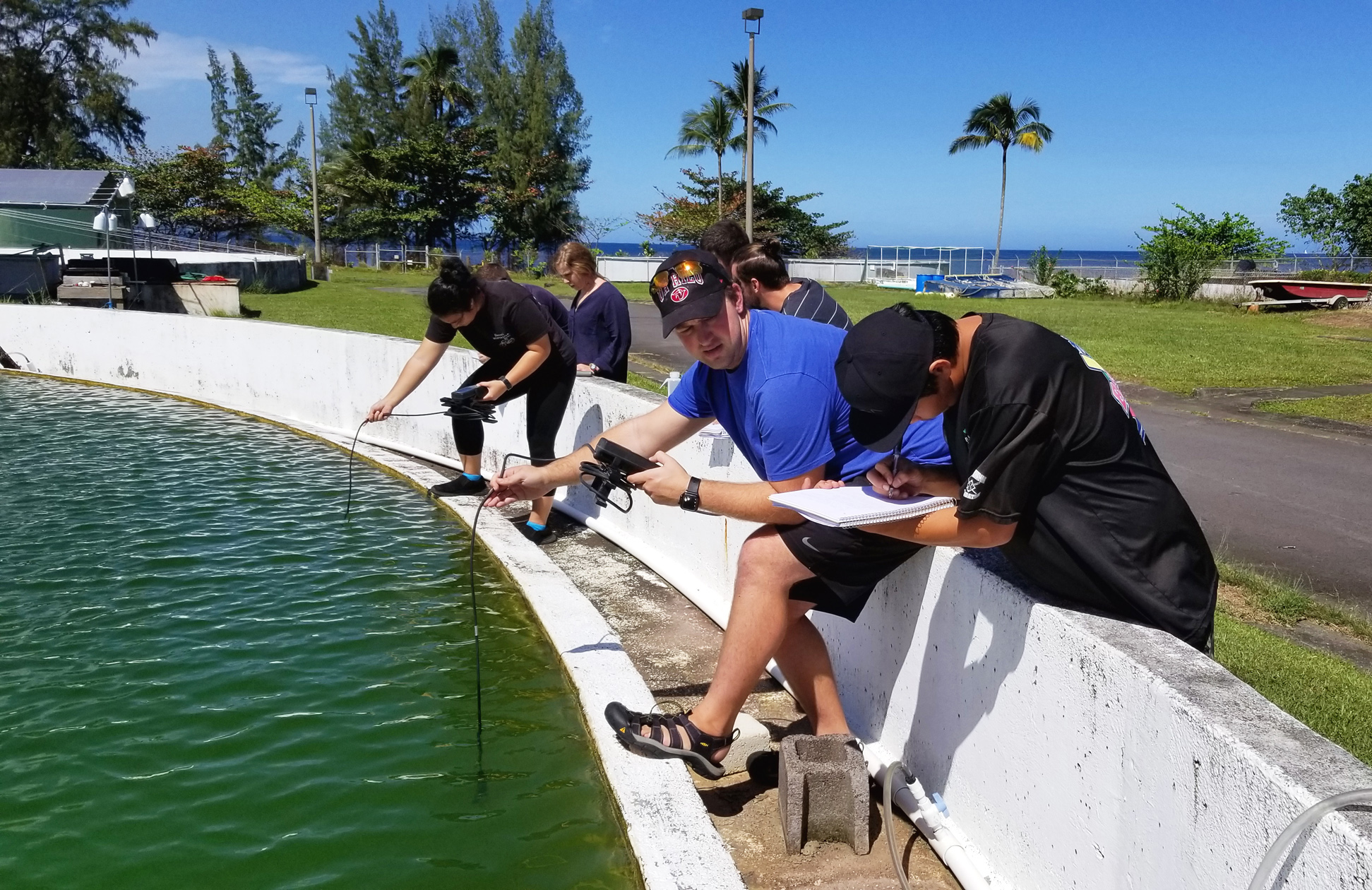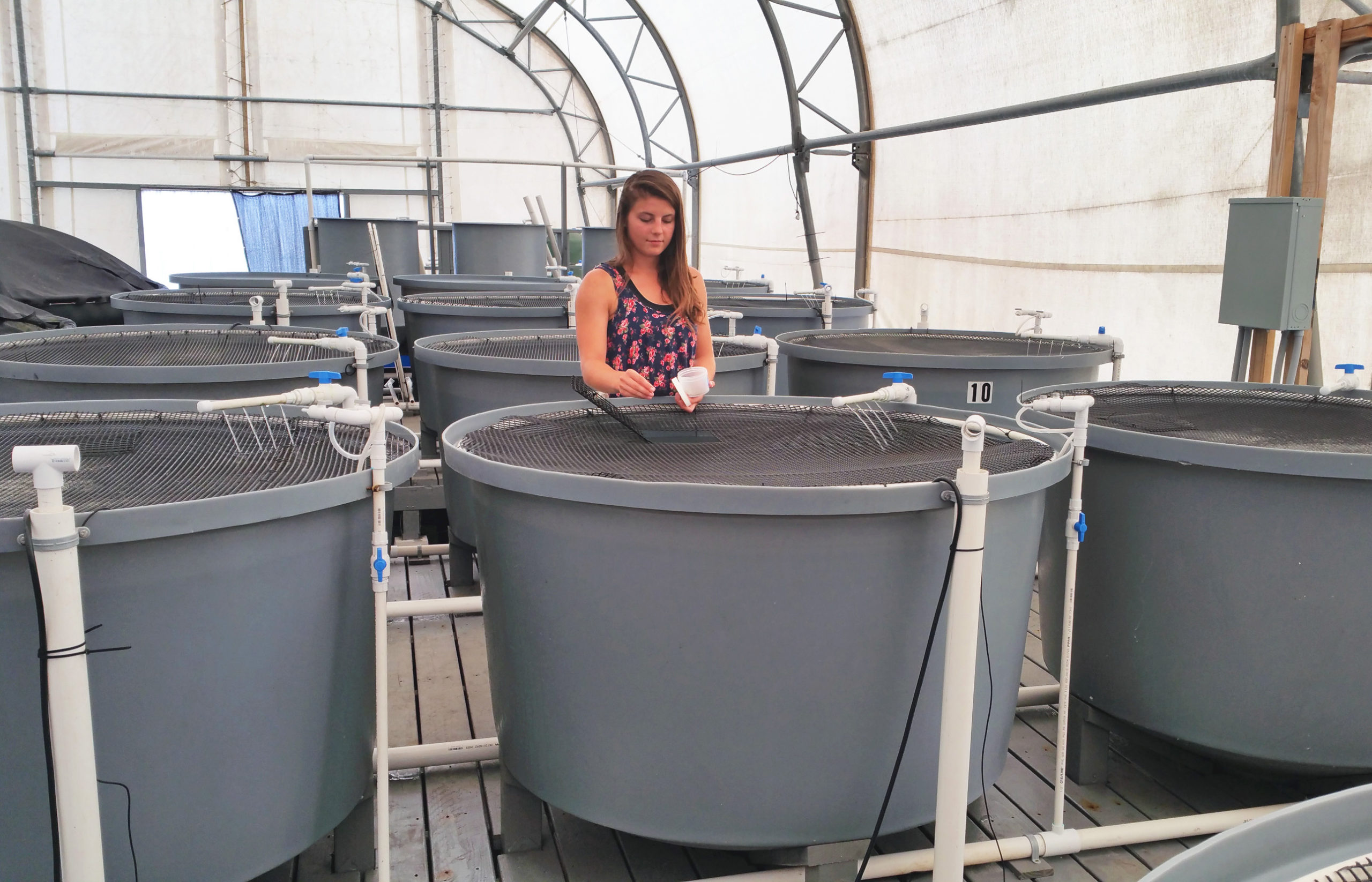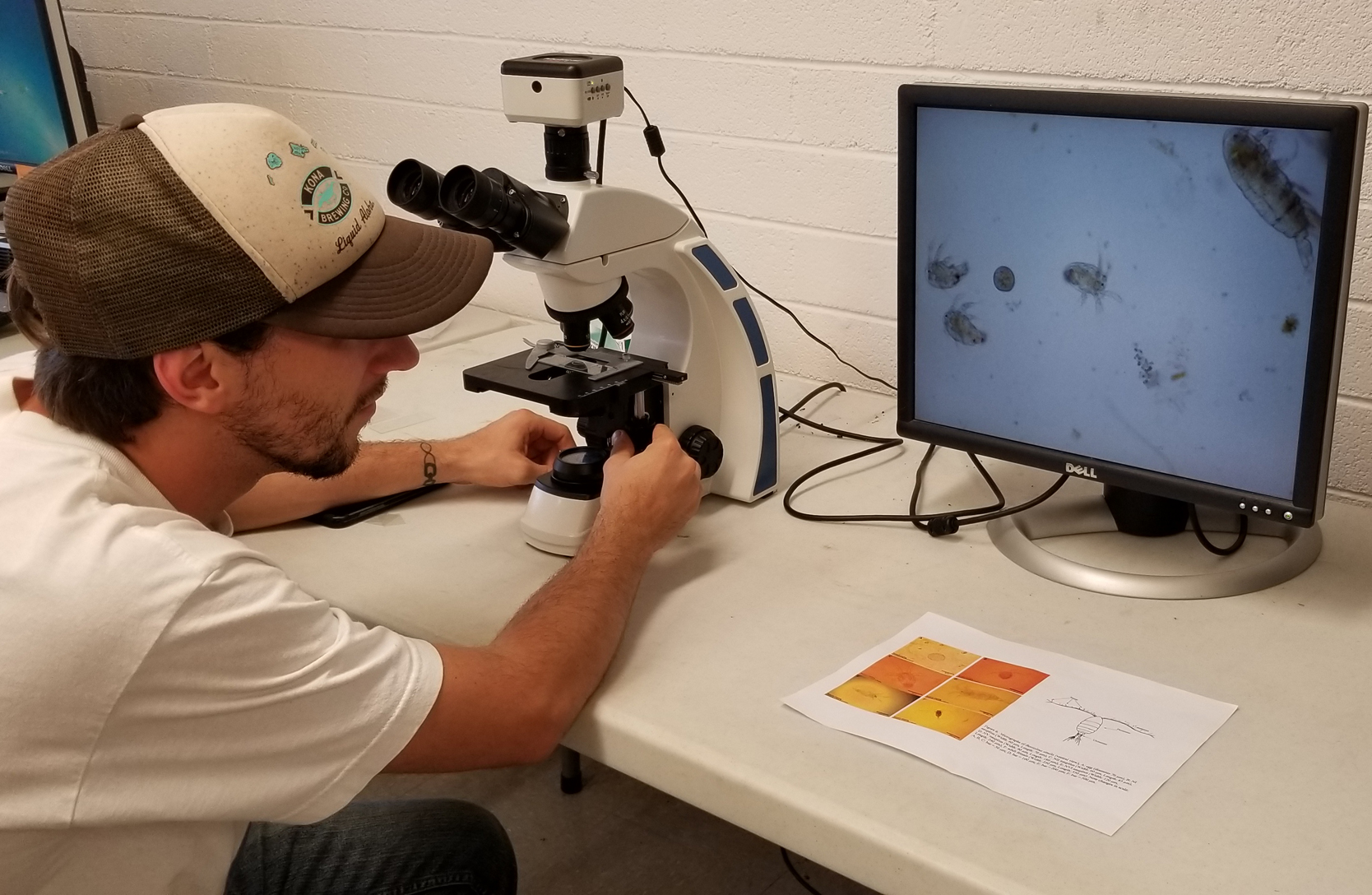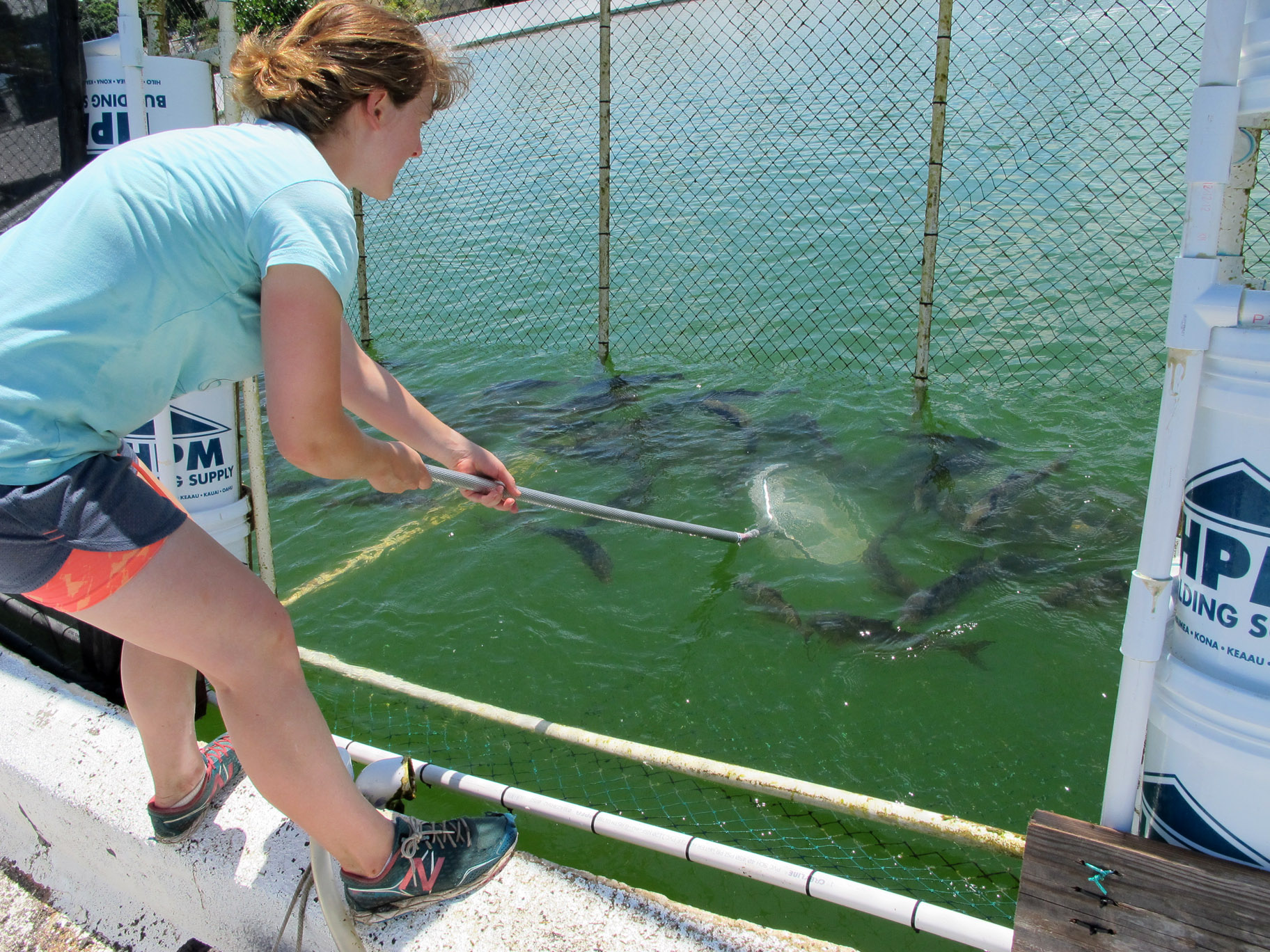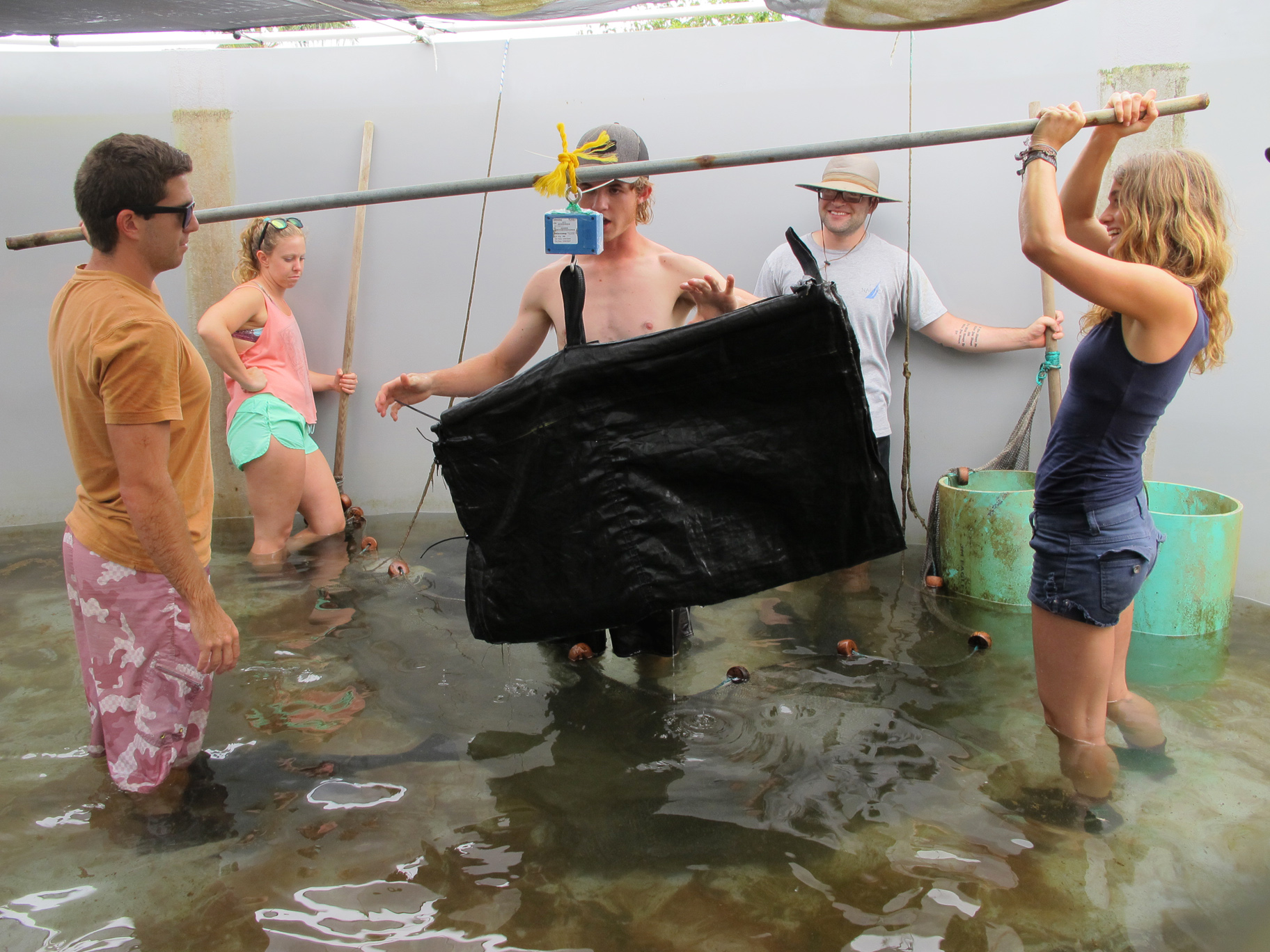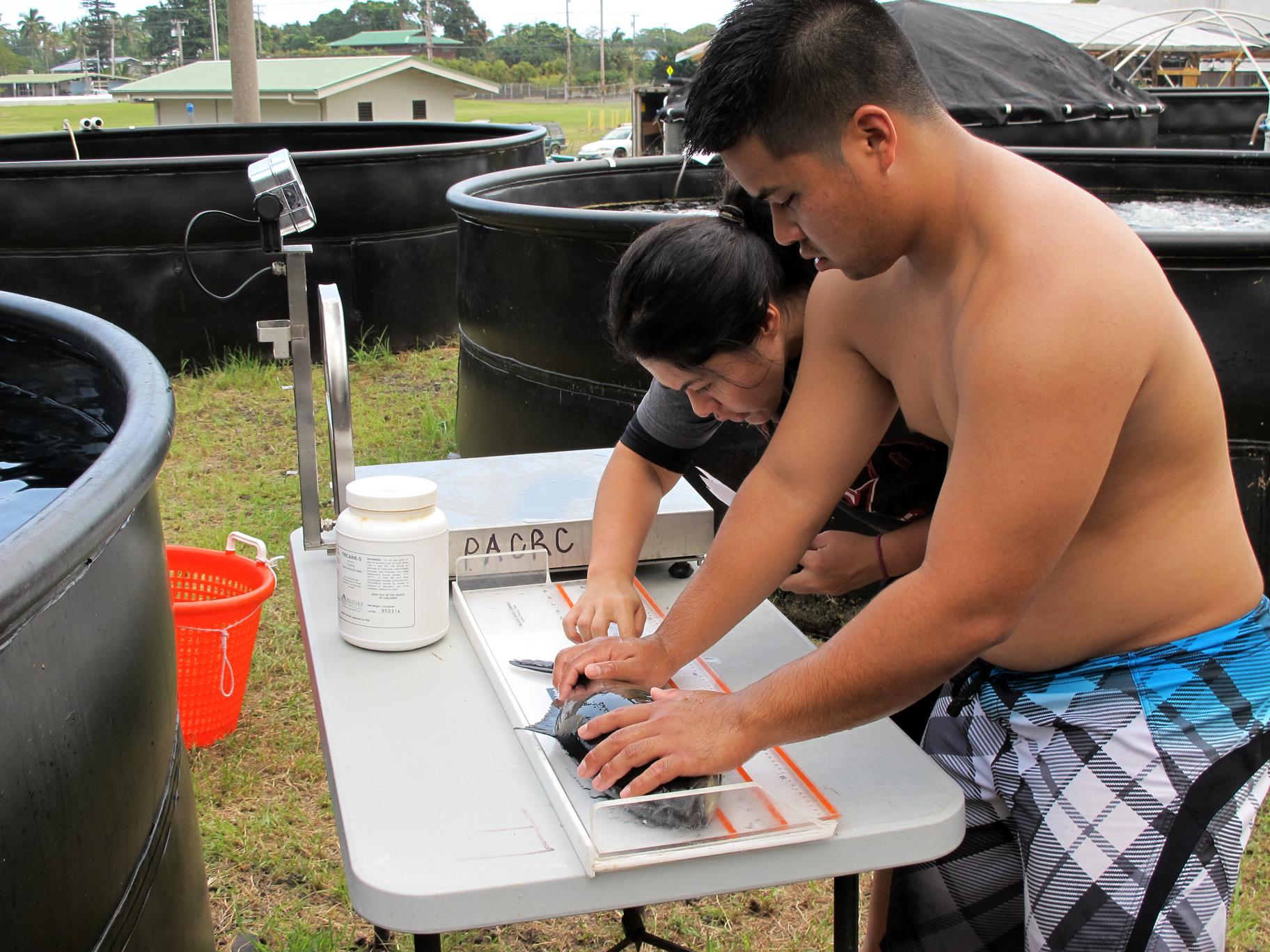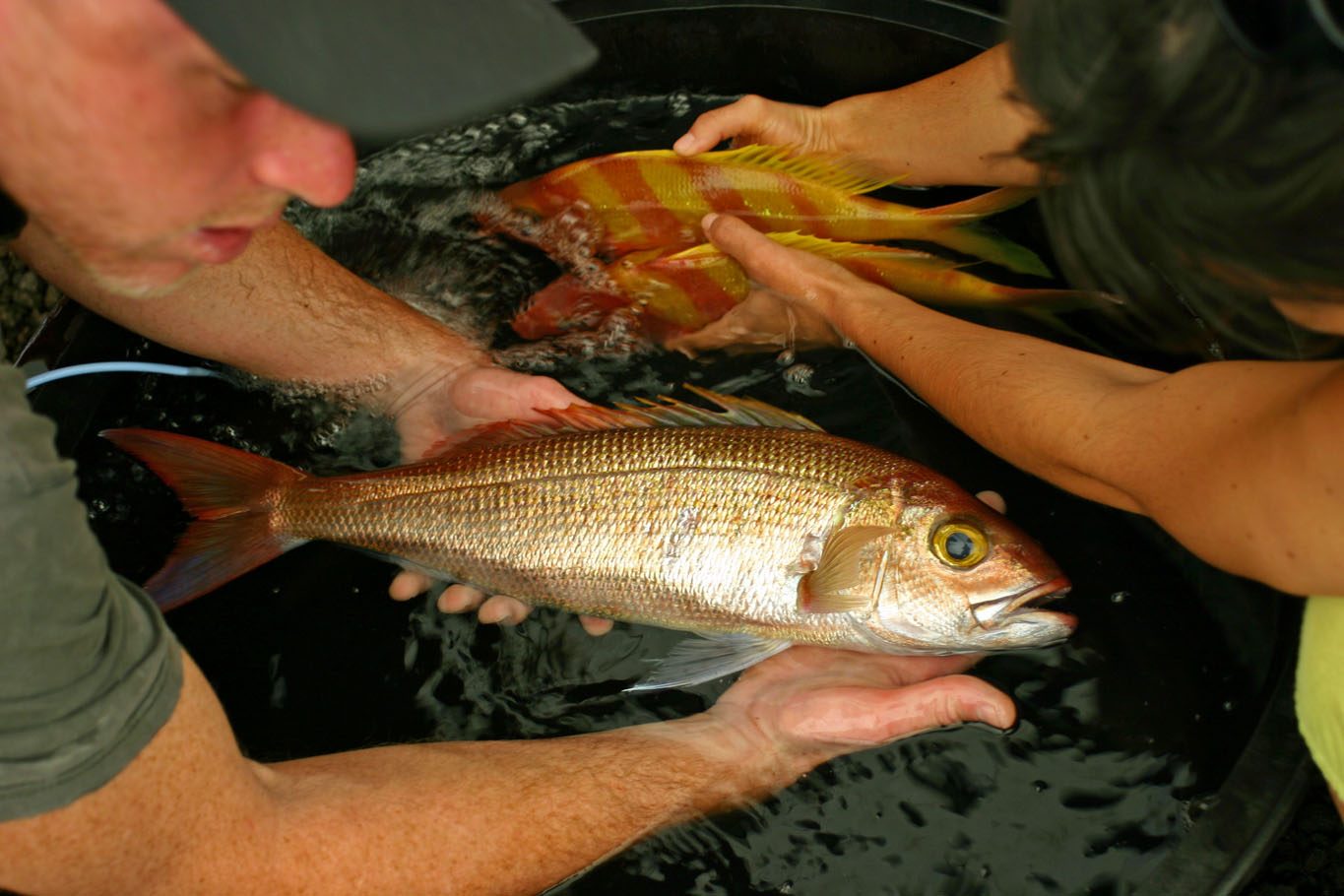Aquaculture Specialty
General Information
The undergraduate Aquaculture specialization was established in 1988. The Hilo area has unique potential for aquaculture education. As expected in a semi-tropical climate, warm seawater and freshwater are available. Additionally, cool fresh and salt water (20 degrees celsius) and cold (6 degrees celsius) seawater can be obtained from wells. This diversity of water supplies allows the culture of almost all aquaculture species including tropical fish, trout, salmon, carp, shrimp, various seaweeds, and shellfish throughout the year.
Aquaculture students currently have access to a freshwater aquaculture facility at the UH Hilo Agricultural Farm Laboratory, as well as the 12-acre Pacific Aquaculture and Coastal Resources Center (PACRC) at Keaukaha. Facilities include a water quality laboratory, a shellfish hatchery, a marine fish hatchery, demonstration fish culture units, and a marine mammal rehabilitation facility. Freshwater and marine aquaponics demonstration units are also present at each facility.
Why Study Aquaculture?
Graduates in Aquaculture can obtain employment immediately after graduation with private firms and various government agencies as aquaculture scientists/technicians. Because of the broad emphasis on both biology and agriculture technology, graduates have many of the skills required to start their own aquaculture enterprises. If students desire a career in research or teaching, this specialty is designed to enable students to be qualified for admittance to graduate programs in aquaculture and fisheries.
Courses and Program Specializations
The College of Agriculture, Forestry and Natural Resources Management (CAFNRM) offers the Bachelor of Science degree. In order to earn this degree the student will choose one of the following areas of specialization, and complete its requirements.
- Aeronautical Sciences
- Animal Health and Management
- Aquaculture
- Tropical Agroecology
- Certificate Programs
The concentration in Commercial Aerial Information Technology (CAIT) will provide the training and background to attain current FAA licensing for the commercial UAS operations of small drones, as well as preparation for future full integration of large UAS operations into commercial airspace. The CAIT concentration is designed to be coupled with a focus in Data Science, Geography, a STEM field or Computer Science using available electives.
View the Aeronautical Sciences Curriculum.
Animal Health and Management
This B.S. Agriculture specialization provides students with a variety of animal science courses related to health and management. In the final years of study, students will take courses aimed at making them qualified for their next academic or professional endeavors. For those who aspire to work on farms, ranches or in the livestock industry, additional agriculture business, general agriculture, and agricultural mechanics will be provided as curriculum options. These courses will prepare students for employment opportunities with farms, dairies, ranches, equestrian centers, experiment stations, quarantine stations, veterinary clinics and zoos. For those who aspire to apply to professional school (veterinary medicine) or a graduate program (M.S. or Ph.D.), curriculum options include courses that are pre-requisites for major veterinary schools such as additional biology and chemistry courses.
CAFNRM has a 110-acre farm that has a livestock operation with beef cattle, hair sheep, meat goats, and swine. Normally at least one horse is kept at the UH Hilo farm for use in working cattle. Students have the chance to work with UH Hilo livestock during animal science labs.
View the Animal Health and Management Curriculum.
Aquaculture
Hawaiʻi’s diversity of water supplies allows the culture of almost all aquaculture species including tropical fish, trout, salmon, carp, shrimp, various seaweeds, and shellfish throughout the year. Aquaculture students currently have access to a freshwater aquaculture facility at the UH Hilo Agricultural Farm Laboratory. A coastal research and teaching facility (PACRC), located at Keaukaha, includes a water quality laboratory, a shellfish hatchery, a marine fish hatchery, demonstration fish culture units, and a marine animal rehabilitation facility.
View the Aquaculture Curriculum.


